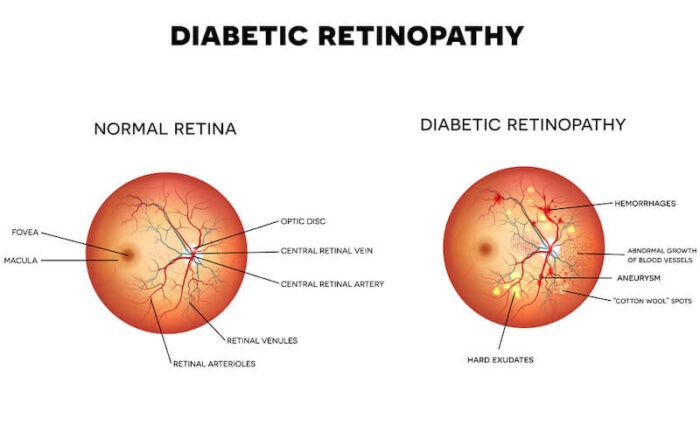Diabetic Retinopathy
What is Diabetic Retinopathy?
In the United States, diabetic retinopathy is one of the leading causes of blindness among adults. People with diabetes have difficulty controlling their blood sugar, which makes them more prone to the condition. Diabetes retinopathy occurs when someone’s blood sugar spikes, resulting in damage to the retinal blood vessels.
Non-Proliferative Diabetic Retinopathy

This form of diabetic retinopathy is one of the leading causes of blindness in the United States. In the early stages of diabetic retinopathy, the walls of the blood vessels in your retina weaken.
Diabetes damages the tiny blood vessels in the retina. These damaged vessels then leak fluid or blood into the retina. This is the most common type of diabetic retinopathy.
Proliferative Diabetic Retinopathy
As diabetic retinopathy progresses, new blood vessels may grow and threaten your vision. Because the new blood vessels are weak they can break open and cause blood or fluid to leak into the middle part of your eye in front of your retina and cause a significant change in your vision.
Is treatment available?
If non-proliferative diabetic retinopathy is present, patients should take appropriate measures to keep blood sugar stable.
For proliferative diabetic retinopathy:
- Any diabetic who has blurred vision, flashes, or floaters should be seen promptly by his/her eye care specialist.
- Laser surgery may be recommended
- If a retinal detachment or vitreous hemorrhage occurs because of the weakened vessels, surgery can be done to fix these problems.

